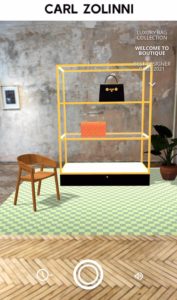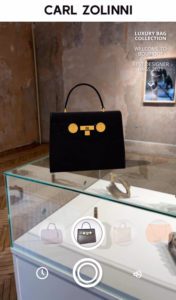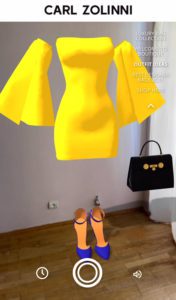What if you could boost conversion rates up to 94%? That’s the kind of growth Shopify was able to achieve when it made AR a staple of its marketing mix. Glasses company Gunnar saw similar results, reporting a 40% increase in sales, and a 5% decrease in returns once it had incorporated AR into the shopping experience by way of virtual try-on.
This is the power of WebAR, app-free augmented reality that is increasingly playing a core role in the pre- and post-consumer journey. Augmented reality is making the world clickable and shoppable, overlaying digital content on the real world, and bringing products to consumers wherever they are.
WebAR can be activated via a QR code or one-click URL link, and is compatible with over 3.5 billion devices. Below are idea starters to seamlessly integrate WebAR into your retail strategy:
WebAR: Adding QR Codes to Packaging for Pre-and-Post Purchase Consumer Experiences
Over the past year, our digital habits have radically changed. It is now commonplace to scan a QR code to view a menu, activate an art gallery’s information guide, or launch a brand-based experience like virtual shoe try-ons, or mini-AR basketball games.
People are using mobile cameras more than ever before to augment digital and physical content, engage in social experiences, and participate in a brand’s narrative by creating user-generated content.
The QR (quick action) code is a window into an entirely new world of opportunity. From a single package, it’s possible to launch an unimaginable amount of value-adding content:
- Build out an entire storefront in augmented reality
- Launch an interactive experience like virtual try-on
- Include digital collectibles or NFT add-ons
- Create interactive quizzes that bring audiences closer to your brand
- Add gamified rewards, like an AR spin wheel
- Generate selfie-filters for user-generated content
In the pre-sales journey, WebAR can inform the purchasing decision and demonstrate a brand’s commitment to their audience by including them in the brand narrative. Augmented reality also adds utility to the shopping experience, allowing consumers to visualize color and style fit through WebAR virtual try-on experiences.
Brands can boost their business’s bottom line by utilizing QR codes to engage post-purchase consumers in the home. A few possibilities to apply QR codes include activating WebAR storefronts from product packaging, launching interactive mix-and-match styling experiences, offering digital rewards, delivering fun visual moments that encourage social media sharing or promoting participation in an online #tag campaign.
As audiences consume more content than ever before, expectations rise higher for interactive experiences that surprise and delight!
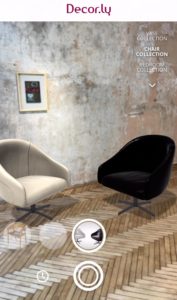
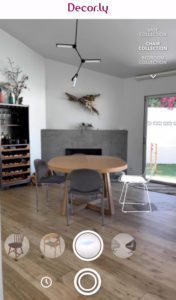
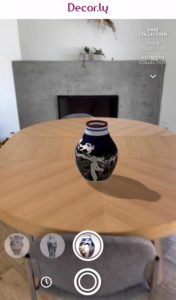
WebAR and Retail: How the Biggest Brands are Making AR a Part of Their Digital Strategy
Herschel Boosts Conversion by 153% with 3D & AR
When Herschel deployed AR product visualizations, they were shocked by the results. Shoppers who interacted with AR products were far more likely not just to complete checkout, but to spend more money per cart. Shoppers who engaged with the AR experience boosted conversion by 153%, and revenue per visit increased by $152%!
With Geenee WebAR, increase device reach, add additional interactive elements, and multiple items per scene for comparison shopping.
Home Depot Augmented Reality Boosted Conversion by 2-3x
When the pandemic forced physical doors to close, new doors opened. The Home Depot accelerated its augmented reality strategy. In an interview with Digital Commerce 360, Justin Burleigh, Vice President of ecommerce and interconnected experiences for Home Depot said on AR:
“We saw it {AR} as a way to bridge digital and physical characteristics, such as size, color, texture and coordinating items in their home. It’s great that the capability came to life before people were at home so much.”
Burleigh also noted that, like many retailers, a majority of their online traffic comes from mobile phones. It makes sense to serve consumers where they are already surfing and shopping online, from home.
As a result of Home Depot’s AR strategy, conversion increased 2-3x compared to shoppers who didn’t engage with the feature!

After Implementing AR, Rebecca Minkoff’s Customers Became 65% More Likely to Place an Online Order
Digital marketing is more competitive than ever before. To stand out from the crowd, fashion retailer Rebecca Minkoff rolled out augmented reality shopping to their online store.
With AR, customers could see products from every angle, place it in their home environment, and mix and match with physical outfits. They could view the size of an item, material, and overall quality of a handbag from the comfort of their home.
By boosting customer confidence with an augmented reality retail experience, Rebecca Minkoff’s customers were 65% more likely to place an online order. Additionally, the brand discovered that adding AR to their marketing mix, in addition to 3D product visualizations had a significant impact, with AR coming out on top:
- Shoppers were 44% more likely to add an item to their cart after interacting with it in AR
- Customers were 27% more likely to place an order after interacting with a product in AR
- Visitors were 65% more likely to place an order after interacting with a product in AR
Check out these examples of Geenee WebAR:
The Augmented Reality Market is one of the Fastest Growing Media Markets
By 2025, nearly 75% of the global population and almost all people who use social communication apps will be frequent AR users (Snap x Deloitte 2021 report).
Additionally, augmented reality and virtual reality market growth is projected to accelerate at a CAGR of 46%, according to Technavio’s June report:
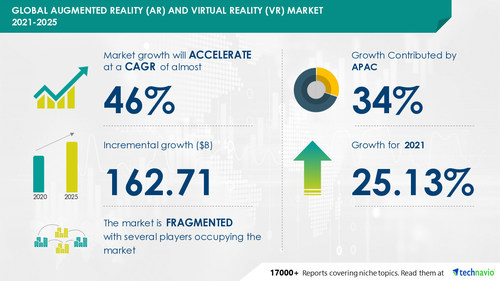
It’s not too late to implement AR into your marketing strategy.
Geenee’s web-based AR builder is designed for no-code content creators to make branded augmented reality experiences for any scale project. It’s What-You-See-Is-What-You-Get with our simple drag & drop application built on core patented image recognition & advanced tracking technologies.
For a limitless experience, use our SDK or drop in your own code within the builder to create, collaborate, manage & publish experiences that surpass expected business results.


